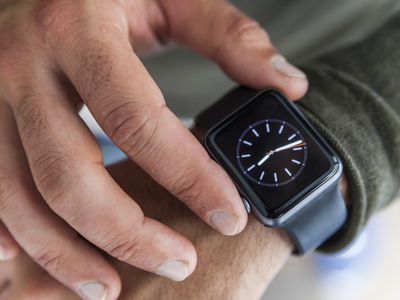
Diagnosing Hardware Failure: Steps to Determine Why Your Device Won't Power Up – Guidance by YL Software

[6 \Times \Frac{b}{6} = 9 \Times 6 \
The Windows 10 display settings allow you to change the appearance of your desktop and customize it to your liking. There are many different display settings you can adjust, from adjusting the brightness of your screen to choosing the size of text and icons on your monitor. Here is a step-by-step guide on how to adjust your Windows 10 display settings.
1. Find the Start button located at the bottom left corner of your screen. Click on the Start button and then select Settings.
2. In the Settings window, click on System.
3. On the left side of the window, click on Display. This will open up the display settings options.
4. You can adjust the brightness of your screen by using the slider located at the top of the page. You can also change the scaling of your screen by selecting one of the preset sizes or manually adjusting the slider.
5. To adjust the size of text and icons on your monitor, scroll down to the Scale and layout section. Here you can choose between the recommended size and manually entering a custom size. Once you have chosen the size you would like, click the Apply button to save your changes.
6. You can also adjust the orientation of your display by clicking the dropdown menu located under Orientation. You have the options to choose between landscape, portrait, and rotated.
7. Next, scroll down to the Multiple displays section. Here you can choose to extend your display or duplicate it onto another monitor.
8. Finally, scroll down to the Advanced display settings section. Here you can find more advanced display settings such as resolution and color depth.
By making these adjustments to your Windows 10 display settings, you can customize your desktop to fit your personal preference. Additionally, these settings can help improve the clarity of your monitor for a better viewing experience.
Post navigation
What type of maintenance tasks should I be performing on my PC to keep it running efficiently?
What is the best way to clean my computer’s registry?
Also read:
- [New] In 2024, The Evolution of Color Formats From Rgb to Srgb
- [Updated] Detailed Review All About Gecata's Recording Mechanism for 2024
- 2024 Approved Polished Portraits How to Use iPhone for Crisp Cuts
- Anticipated Changes in Microsoft's Windows Update Cycle: A Fresh Perspective by ZDNet
- Beyond Ransomware: How Unintended Software Glitches Could Bring Vital Systems to Their Knees | Analysis on ZDNET
- Black Friday Bargains at Microsoft Store: Score a Discounted $300 Surface Go 2 or Snag the $230 Acer Convertible for Less! - Exclusive Deals From ZDNet
- Boost Your Windows 11 Laptop Lifespan: Essential 9 Configuration Adjustments to Optimize Battery Use
- Discover iPhone's Best Video Game Emulators Now
- Enhance Your PC with Windows Pro: A Guide for Home Edition Users - ZDNet
- Impact of Google's Antitrust Legal Defeat: Implications for Users & The Evolving Landscape of Online Search | TechInsights
- In 2024, How to Track Itel A60s Location by Number | Dr.fone
- In 2024, Unlocking AdSense Potential in YouTube Content Creation
- Mastering the Art of Detaching Sound From Visuals in Adobe Premiere Pro
- Reasons why Pokémon GPS does not Work On Nokia C12 Pro? | Dr.fone
- Secure Your Digital Presence Using Multi-Factor Authentication: Activation Tips & Tricks - Insights From ZDNet
- Spark Creativity: Mindmapping & AI-Enhanced Ideas
- Title: Diagnosing Hardware Failure: Steps to Determine Why Your Device Won't Power Up – Guidance by YL Software
- Author: Larry
- Created at : 2025-03-05 17:11:06
- Updated at : 2025-03-07 17:04:37
- Link: https://win-bits.techidaily.com/diagnosing-hardware-failure-steps-to-determine-why-your-device-wont-power-up-guidance-by-yl-software/
- License: This work is licensed under CC BY-NC-SA 4.0.